Este post também está disponível em:
Português
English
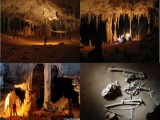
The town of Campo Formoso in Bahia is known for its caves and emerald trade.
Campo Formoso is located in the Chapada Diamantina and has in its territory many caves with various types of interior formation.
In addition to the largest cave, in extension, in the Southern Hemisphere: Toca da Boa Vista, the largest known cave in Brazil and the Southern Hemisphere with more than 120 km of galleries mapped until 2007, is one of the most important Brazilian speleological and paleontological sites.
The municipality of Campo Formoso, an age known for the production of emeralds, 414 kilometres from Salvador, hosts the Fair of Precious Stones, Emeralds and Handicrafts.
Together with the neighbouring caves Toca da Barriguda, Toca do Calor de Cima, Toca do Pitu and Toca do Morrinho, they constitute a set of worldwide geological relevance.
Videos about “Campo Formoso in Bahia”
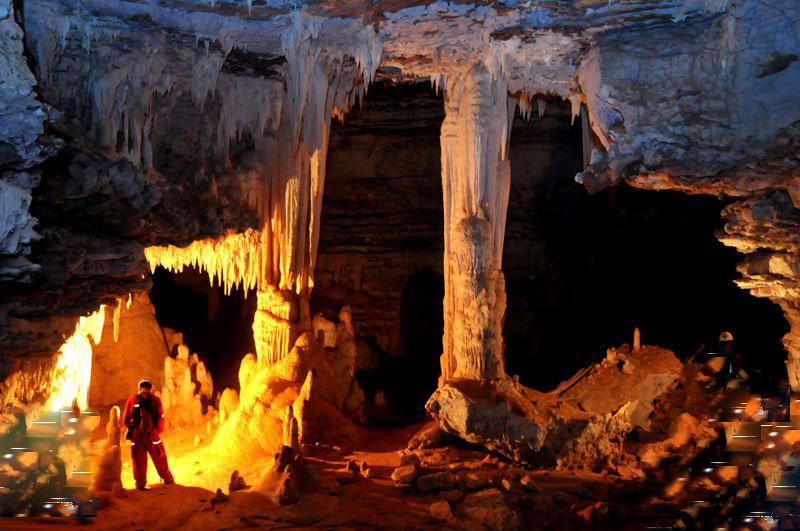

Grutas de Campo Formoso
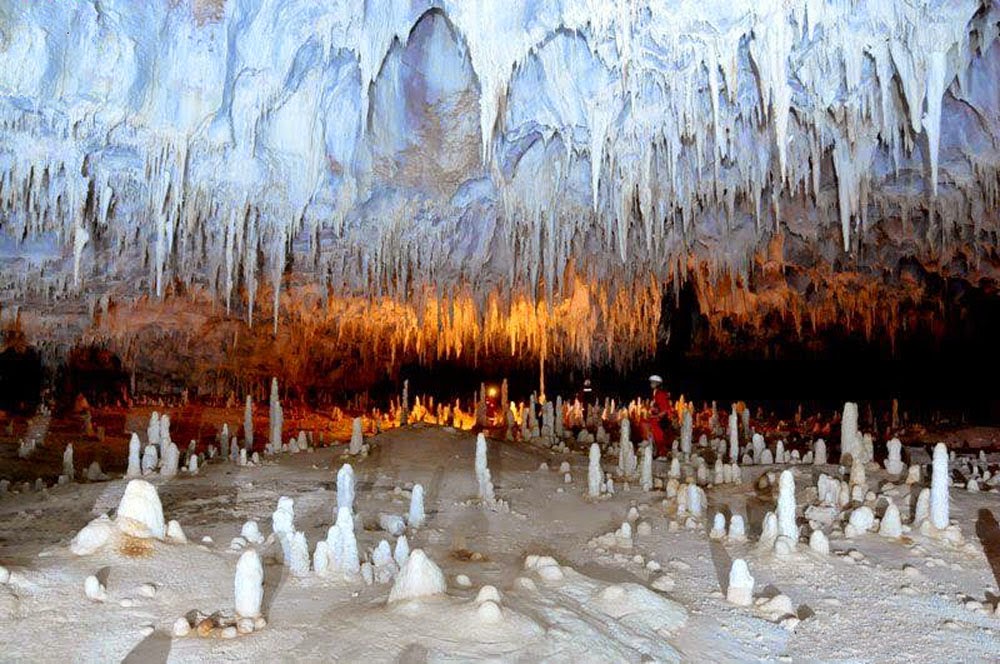
Campo Formoso e suas grutas
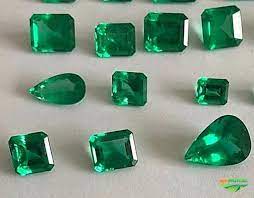
Caçadores de Esmeraldas
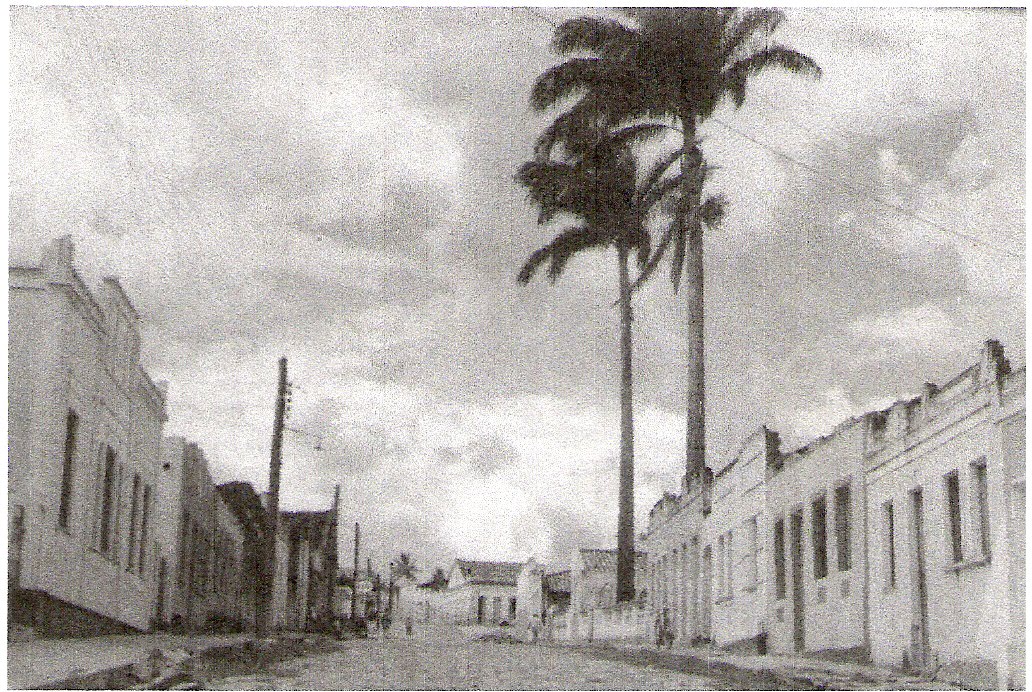
História de Campo Formoso
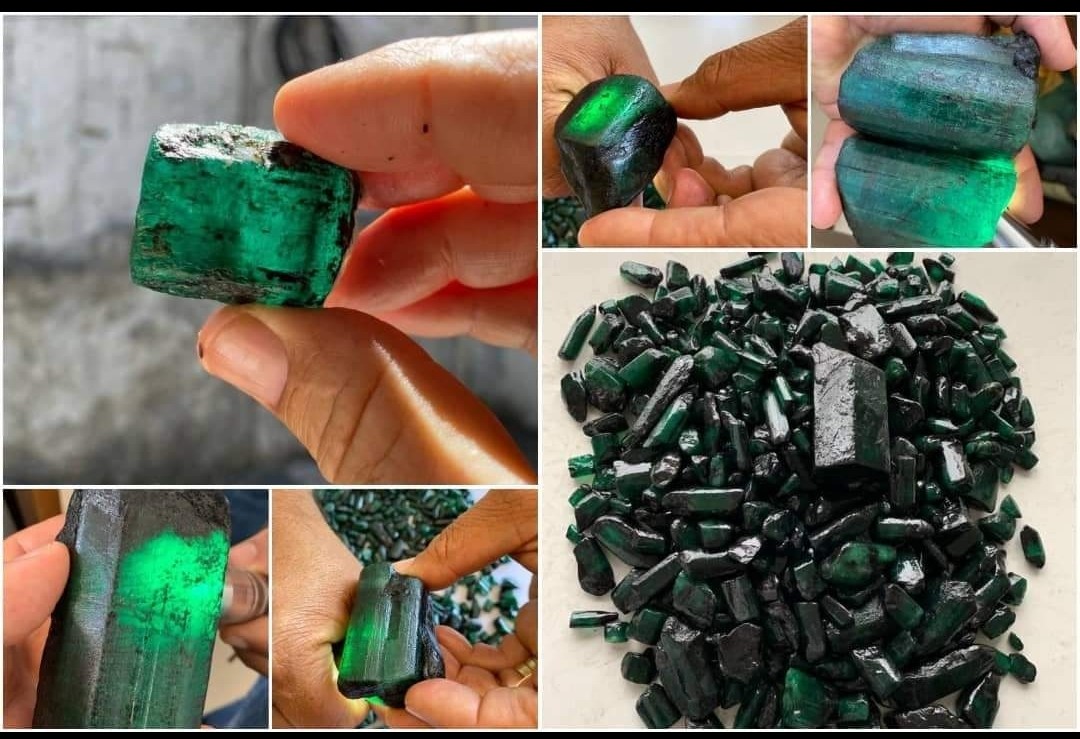
Curiosidades sobre as esmeraldas de Campo Formoso
CAVES OF THE MUNICIPALITY OF CAMPO FORMOSO
See also Emerald hunters in Chapada Diamantina
1. Toca da Boa Vista
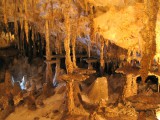
The largest cave in the Southern Hemisphere, with 102.5 km mapped and topographed by the Bambuí Group of Speleological Research, occupying the 11th position among the largest caves on the planet, has an atypical and very rich morphology from a scientific point of view.
Numerous fossils found there have made it possible to expand knowledge about the palaeontology of Pleistocene vertebrates. In addition, important studies are being carried out in the fields of palaeotoclimatology and karst geology.
The cave also has speleothems of exotic mineralogy and rare morphology. It is a large dry labyrinth, forming narrow conduits to large halls.
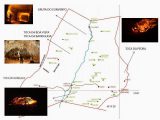
The largest of them is the hall called Salão Telécio, named in honour of José Telesphoro, a great leader of Campo Formoso and pioneer to enter and glimpse the great potential of the Gruta da Boa Vista.
The most beautiful halls are: The Conduit of the Flying Saucers, the Beyond World, the New World, the Third World and the final stretch, baptised the End of the World.
The state of preservation of this cave is very good, since its visitation is so far restricted to speleologists and other scientists experienced with the eco-system of the caves.
2. Toca da Barriguda
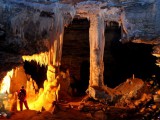
Its marvellous halls are an enchantment to the eyes of all who enter it.
It is made up of large halls adorned with stalactites and stalagmites, oozes and the 16,400m² Caatinga Conduit, and is undoubtedly the most beautiful hall in the region, due to both the “forest” of stalagmites on the floor and the curious ceiling full of cupuias.
It is also of great scientific importance with fossil bones and palaeoenvironmental evidence, which are abundant in this cave, making it an important natural museum.
Its route is 30 kilometres mapped and topographed by the Bambuí Group of Speleological Research.
3. Pontes do Sumidouro em Campo Formoso
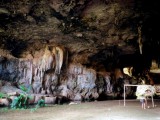
The first bridge, 85m long, is characterised by a large volume of collapsed blocks, scarce speleothems, displaying waterfall forms on the side walls and travertines in the course of the river. It is interesting to note that there is a carriageway over this natural bridge.
Bridge II, at 305m, already has a higher density of speleothems both on the ceiling and on the side walls (stalactites, cascades, curtains and others). The floor is flat and made up of humid clay, deposited during the floods of the Pacuí River.
Walking along the banks of the river for 95 km, you reach Bridge 3. This is the largest and most beautiful bridge, with 310m of development with a large amount of carbonate deposits, such as numerous travertines, columns, pearls and others.
The floor is similar to that of Bridge 2, composed of clay from the floodplain of the Pacuí River, which flows between bluish stones and coarse sand shining in the clear sun of the caatinga.
4. Gruta do Convento
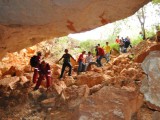
The Gruta do Convento, located near the village of Abreus, is very large and stands out both for its underground beauty, framed by a skylight, and for its religious value, attracting pilgrims devoted to Our Lady of Aparecida.
She has been venerated there for several decades. It has been known since the 8th century, when saltpetre mines were discovered and exploited in the Abreus region. The route inside the cave is extremely easy due to the horizontal nature of the galleries. Several skylights allow light to enter, enhancing the beauty of the cave, as well as easy access to the surface.
The state of conservation of this cave is good. This is due to the large size of the galleries and the absence of speleothems in accessible places.
The cave is fed by intermittent streams: the Queixo D’anta and Tanquinho, which are born in the Serra do São Francisco to the west of the village of Abreus.
Although it has concentrations of stalactites and stalagmites, and curtains on the side walls, this cave resembles an immense phreatic pressure conduit where the waters of a voluminous tributary of the Pacuí River circulated in the past, forming an integrated circuit of caves that are easy to visit due to the proximity between them.
5. Toca da Onça or Gruta da Tiquara
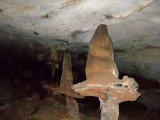
The Toca da Onça or Gruta da Tiquara is located at 10º 24′ 46″ south latitude and 40º 24′ 46″ west longitude, being almost in the urban perimeter of the village of Tiquara. It has some rock paintings inside.
Among the paintings observed, one can note a similarity with the São Francisco / geometric tradition, which is quite frequent in the state of Minas Gerais. According to Valentim Calderon, the São Francisco tradition resembles the symbolist tradition.
The paintings have been badly destroyed by the extraction of saltpetre in the 1930s, and are also heavily graffitied.
The Tiquara cave is of extreme importance in characterising the predominant style of rock art in the region, and its features differ from all the others found in the other localities we visited.
TURISM IN CAMPO FORMOSO
Campo Formoso region has great tourism potential – Campo Formoso has a great potential of natural beauty, which guides the municipal administration to seek the implementation of tourism as a new economic activity, a new source of income.
In order to do so, in addition to the search for infrastructure, it is necessary to mobilise the population and promote a new education aimed at citizenship, the protection of natural, historical and cultural heritage, in short, to live with the tourist and this new economic activity. New programmes are to be implemented in the municipality’s schools.
The Department of Education, Culture and Tourism of the Municipality of Campo Formoso, aware of the natural beauty of this region, opens its doors to offer nature lovers the delights it provides to all those who seek refuge in its corners.
Thus, the visitor can walk or ride horses and donkeys along enchanting trails, between meadows and green fields, contemplating scenery framed by mountains and blue hills? Murmuring rivers and streams whisper between the rocks.
The visitor is also offered an excursion to the caatinga region with its harsh, conflicting and lonely beauty; with its thorny and twisted vegetation.
And, descending into the interior of the earth, the tourist contemplates scenarios never seen by human eyes. Over the millennia, nature has created dazzling palaces and castles in the heart of the planet.
In each room you enter, more surprises appear, enchanting the retinas of modern man, leading him to meditate on the greatness of Creation.
All these riches are within our reach, we need only seek them with hearts thirsting for beauty and harmony.
Campo Formoso – Geography
The municipality of Campo Formoso is located in the north of Bahia, west of the Jacobina mountain range. Its history dates back to the beginning of the colonisation of the interior lands of Brazil-Colony (17th century).

In its area is located the Salitre Valley, whose river of the same name is a tributary of the right bank of the São Francisco River.
The city is 400 km from Salvador, which can be reached via the BR-324 highway to Senhor do Bonfim, 24 km from there via an asphalt road that connects the two cities. Despite its proximity to the caatinga, the city has a mild climate, with nights cooled by the trade winds channelled through the chain of mountains that surround the region.
Location : Polígono das secas , North of the State of Bahia, region of Vale do São Francisco, micro-region of Senhor do Bonfim.
See the map of the Geographical Situation
Boundaries:
North: Juazeiro and Sobradinho.
South: Antonio Gonçalves, Mirangaba and Umburanas.
East: Senhor do Bonfim and Jaguarari.
West: Sento Sé
History of Campo Formoso
Formerly the Old Parish of Santo Antonio do Sertão da Jacobina, its baroque name recalls the 17th century period. It was the first settlement to emerge in the north of Bahia. In 1682, the village was elevated to the category of Parish by the 1st Archbishop of Bahia, D. Gaspar Barata de Mendonça.
Jacobinas were called in Bahia, the lands of low and thorny vegetation that formed the hinterland. It was inhabited by the Indians sapóias, paiaiás, tocós, secaquerinhens, all belonging to the group of the Quiriris, forming the great nation of the Tapuias.
The first Portuguese to arrive in Jacobinas were the bandeirantes from Bahia.
Amongst them are: Belchior Dias Moréia, the discoverer of the legendary silver mine and his son Robério Dias, the lord of Casa da Torre Francisco Dias D’Avilla and his brother Father Antonio Pereira, founder of sesmaria where the lands of the Old Parish of Santo Antonio da Jacobina were included; the brothers Manoel and João Calhelha and Lourenço de Matos, discoverers of the Jacobinas who moved to the settlement of Freguesia Velha “where they lived and died”; Bento Surrel, discoverer of the saltpetre and salt mines in the valley of the Salitre River.
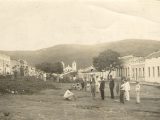
The first missionaries arrived in the Jacobinas hinterland in 1655, finding at the time more than eighty villages formed by various tribes; the Sapoiás, the Paiaiás, the Eveninhens, etc.
On 22 July 1722, by order of the Vice King of the State of Brazil, the sertanista Pedro Barbosa Leal, installed the village of Santo Antonio de Jacobina, in Sítio do Sahay, near the Mission of Nossa Senhora das Neves do Sahay.
The choice of this location was motivated by the refusal of the vicar of the Old Parish of Santo Antonio and the lord of the Tower House, who did not accept the installation of the village of the arraial of Santo Antonio, seat of the Old Parish of Santo Antonio.
Two years later the village was transferred to the Mission of Bom Jesus da Glória de Jacobina Nova (today the city of Jacobina)
The main promoter of progress in the region of the Old Parish of Santo Antonio was the exploitation of saltpetre ore in Pacuí (Nossa da Encarnação workshop) and in the mines of João Martins and João Peixoto.
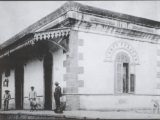
This ore was transported on donkeys’ backs to the port of Bahia and then on to Portugal. From saltpetre was extracted the gunpowder used in the war industry.
Then came the period of cattle breeding, with the installation of farms and corrals administered by overseers, cowboys and drovers.
In the year 1770, the residents of the Arraial da Freguesia Velha, sent to King José I a large petition for the town to be elevated to the category of village.
Despite reasonable arguments, no decision was taken in this regard. And the village of Santo Antonio waited 110 years for this desire so longed for by its population to happen.
It was on 28 July of the glorious year of 1880 that by Provincial Law no. 2051, signed by the Governor of the Province of Bahia, D. Antonio de Araújo Bulcão, the village of Campo Formoso (former Old Parish of Santo Antonio do Sertão da Jacobina) was created, with all the limits of the Parish. Its installation took place three years later, in 1883.
In 1939, its seat was elevated to the category of city, by Decree – Law No. 11,089 of 30 November 1938.
Located on the slopes of Serra da Jacobina, Campo Formoso, is a city full of slopes and hills.
The commercial centre, government offices, hotels, hospital, churches and old residences are located on the Morro dos Alecrins.
With progress, the city has grown towards the hills that surround it, forming several neighbourhoods: Esplanada, São Francisco, Vila Pernambucana, Vila dos Sonhos, Bosque das Mangueiras, Santa Luzia, Colina do Sol, Baixa dos Tapuias, Serra do Cruzeiro, Centro Cultural, Guabiraba and others.
Bahia.ws is the largest tourism and travel guide for Bahia and Salvador.
Tourism and Travel Guide of Campo Formoso in Bahia



















